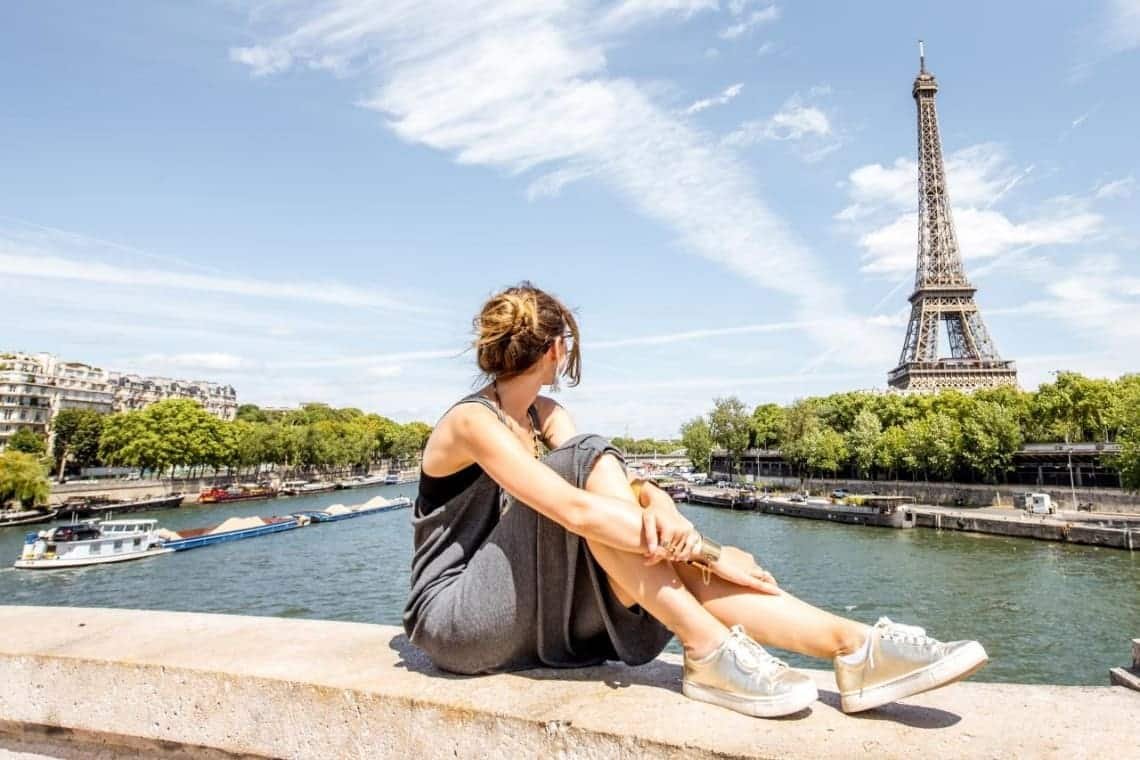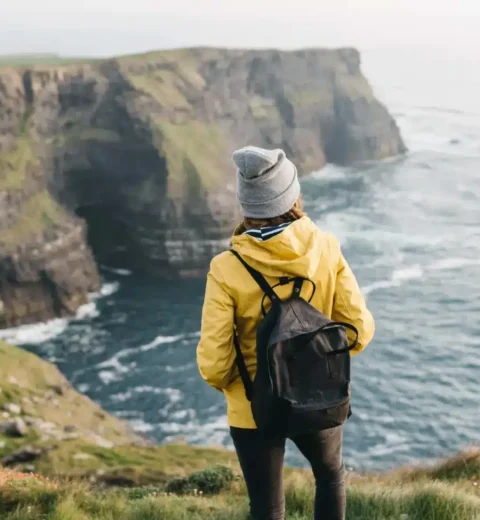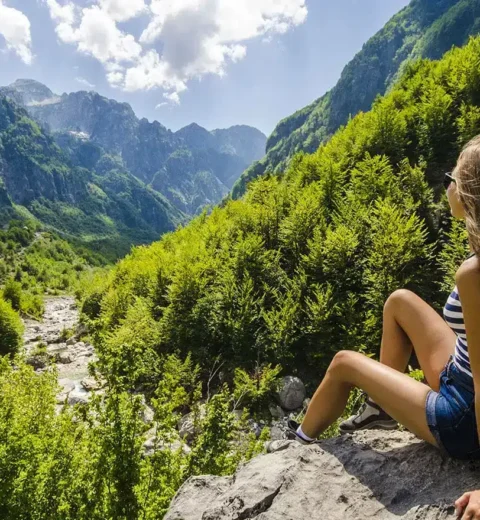Paris, the City of Light, continues to captivate travelers with its timeless charm and modern allure. From the majestic Eiffel Tower to quaint cobblestone streets, every corner of this iconic city tells a story. Planning a trip to Paris in 2026 demands careful thought to fully embrace its rich culture, delectable cuisine, and vibrant atmosphere.
Whether you’re dreaming of sipping espresso at a sidewalk café or marveling at masterpieces in the Louvre, Paris offers endless possibilities for adventure. This guide is designed to help you navigate the essentials, from choosing the perfect season to crafting an itinerary that blends must-see landmarks with hidden gems. With thoughtful preparation, your 2026 Parisian escape will be nothing short of magical.
In 2026, Paris is set to shine even brighter with sustainable initiatives and innovative experiences, like AR-guided museum tours and eco-friendly dining. This ultimate guide provides practical tips, budget advice, and cultural insights to ensure your trip is seamless and unforgettable. Get ready to fall in love with the City of Light!
Choosing the Best Time to Visit
Paris is a year-round destination, but each season offers a unique experience. Here’s a breakdown to help you decide:
- Spring (March-May): Mild weather, blooming gardens, and fewer crowds make spring ideal for sightseeing. Book early for events like Paris Fashion Week (early March).
- Summer (June-August): Warm and lively, with festivals like Fête de la Musique (June 21). Expect larger crowds and higher prices.
- Fall (September-November): Cooler temperatures, vibrant foliage, and events like Paris Art Week (October) create a charming atmosphere.
- Winter (December-February): Fewer tourists, festive Christmas markets, and lower hotel rates. Pack for chilly, rainy days.
Tip for 2026: Aim for late spring (April-May) or early fall (September-October) for pleasant weather and manageable crowds. Check for major events, as Paris will likely host conferences or exhibitions tied to global trends in 2026.
Setting Your Budget
Paris can be expensive, but strategic planning keeps costs in check. Here’s a rough estimate for a week-long trip per person (mid-range):
- Flights: $600-$1,200 (book 3-6 months in advance for deals).
- Accommodation: $100-$250/night for a mid-range hotel or Airbnb.
- Food: $30-$80/day for meals (mixing cafes and grocery stores).
- Attractions: $100-$200 for major sites (consider a Paris Pass for savings).
- Transport: $30-$50 for metro tickets or bike rentals.
Money-Saving Tips:
- Book flights and accommodations early using platforms like Skyscanner or Booking.com.
- Opt for a Paris Visite pass for unlimited public transport.
- Eat like a local: Grab baguettes, cheese, and wine from markets like Marché Bastille for picnics.
Crafting Your Itinerary
A well-planned itinerary balances iconic landmarks, hidden gems, and downtime. Here’s a sample 5-day itinerary for 2026:
Day 1: Iconic Paris
- Morning: Visit the Eiffel Tower (book tickets online in advance to skip lines). Enjoy a coffee at Café de l’Homme with tower views.
- Afternoon: Stroll along the Champs-Élysées to the Arc de Triomphe. Climb to the top for panoramic city views.
- Evening: Dine at a classic brasserie like Le Fouquet’s and take a Seine River cruise at dusk.
Day 2: Art and Culture
- Morning: Explore the Louvre Museum (pre-book a timed entry). Focus on highlights like the Mona Lisa and Venus de Milo.
- Afternoon: Wander through the Tuileries Garden and visit the Orsay Museum for Impressionist masterpieces.
- Evening: Enjoy a performance at the Opéra Garnier or a jazz show in the Latin Quarter.
Day 3: Historic Paris
- Morning: Tour Notre-Dame Cathedral (reopening in 2024, with possible updates in 2026). Walk to Sainte-Chapelle for its stunning stained glass.
- Afternoon: Explore the Marais District, with its historic streets, boutiques, and the Pompidou Centre for modern art.
- Evening: Dine at a cozy bistro like Le Comptoir Général.
Day 4: Montmartre and Beyond
- Morning: Visit Sacré-Cœur Basilica in Montmartre. Wander the cobblestone streets and artist-filled Place du Tertre.
- Afternoon: Head to Père Lachaise Cemetery to see the graves of Jim Morrison and Oscar Wilde.
- Evening: Catch a cabaret show at Moulin Rouge (book early for 2026).
Day 5: Day Trip and Relaxation
- Morning-Afternoon: Take a day trip to Versailles Palace (40 minutes by RER train). Explore the palace and its gardens.
- Evening: Return to Paris for a relaxed dinner at a rooftop restaurant like Le Perchoir.
Pro Tip: Use apps like Citymapper for navigation and Paris Museum Pass for discounted entry to multiple attractions.
Where to Stay
Paris has 20 arrondissements (districts), each with a unique vibe. Here are the top picks for 2026:
- 1st Arrondissement: Central, near the Louvre and Tuileries. Ideal for first-timers (e.g., Hotel Regina Louvre).
- 4th Arrondissement (Le Marais): Trendy, with historic charm and vibrant nightlife (e.g., Hotel de la Bretonnerie).
- 7th Arrondissement: Close to the Eiffel Tower, quieter vibe (e.g., Hotel du Cadran).
- Montmartre (18th): Artistic and bohemian, great for budget travelers (e.g., Le Village Hostel).
Booking Tip: Reserve 4-6 months in advance for 2026, as hotels fill up fast, especially during events. Check for eco-friendly stays, as Paris pushes sustainable tourism.
Getting Around
Paris is walkable, but its public transport is efficient:
- Metro: Fast and affordable, with 16 lines covering the city. Buy a Navigo card for weekly savings.
- Buses: Scenic but slower. Great for short trips.
- Bikes: Use Velib’s bike-sharing for eco-friendly exploration.
- Taxis/Rideshares: Uber is widely available, but pricier.
2026 Update: Paris is expanding its bike lanes and electric bus fleet, making sustainable transport even easier. Download the RATP app for real-time schedules.
Dining Like a Parisian
Parisian cuisine is world-famous, from croissants to coq au vin. Must-try experiences:
- Breakfast: Fresh pastries at a boulangerie like Du Pain et des Idées.
- Lunch: Grab a falafel at L’As du Fallafel in the Marais or a croque-monsieur at a cafe.
- Dinner: Splurge on a Michelin-starred restaurant like Le Jules Verne (Eiffel Tower) or opt for affordable bistros like Chez Janou.
- Desserts: Indulge in macarons at Ladurée or crème brûlée at Café de Flore.
Tip: Make dinner reservations for popular spots, especially for 2026, as tourism rebounds. Explore food markets like Marché des Enfants Rouges for authentic bites.
Cultural Etiquette and Tips
- Language: Learn basic French phrases (“Bonjour,” “Merci”). Locals appreciate the effort.
- Tipping: Service is included, but rounding up or leaving 5-10% is polite.
- Dress Code: Parisians dress stylishly. Opt for smart-casual attire, especially at restaurants or cultural sites.
- Safety: Beware of pickpockets in crowded areas like the metro or near landmarks.
Packing Essentials for 2026
- Comfortable walking shoes for cobblestone streets.
- Weather-appropriate clothing (layers for spring/fall, warm coats for winter).
- Universal power adapter (Type E/F sockets in France).
- Reusable water bottle and tote bag for eco-conscious travel.
- Portable charger for long days of exploring.
Planning for 2026 Trends
- Sustainability: Paris is prioritizing green initiatives. Look for eco-certified hotels and restaurants.
- Tech Integration: Expect more AR-guided tours at museums and contactless payment systems.
- Events: Check for 2026-specific events like art fairs or tech expos, which may draw crowds.
Estimated 5-Day Paris Trip Costs by Travel Type (2026)
Here’s a quick breakdown of how much a 5-day trip to Paris, France could cost depending on your travel style — from budget-friendly adventures to luxury getaways.
| Category | Budget Trip | Standard Trip | Expensive Trip |
| Flight (Round Trip) | Low-cost airlines like Ryanair or EasyJet – $250–$800 | Economy flights with Air France or Delta – $800–$1,200 | Business class with Emirates or Qatar – $2,000–$4,000+ |
| Accommodation (Per Night) | Hostels or small hotels – $40–$90 | 3–4 star hotels – $150–$250 | 5-star hotels – $500–$1,000+ |
| Meals (Per Day) | Cafés or street food – $20–$35 | Mid-range restaurants – $50–$80 | Fine dining – $150–$400+ |
| Transport | Metro or walking – $15/day | Metro and taxis – $25–$40/day | Private car or transfers – $150+/day |
| Attractions & Activities | Free sights and parks – $30 total | Main attractions and tours – $100 total | Private tours and VIP shows – $300+ total |
| Total (5 Days) | $700–$1,200 | $2,000–$3,000 | $6,000–$10,000+ |
Final Checklist
- Book flights and accommodations 4-6 months in advance.
- Purchase attraction tickets online to avoid lines.
- Download offline maps (Google Maps or Maps.me) and translation apps.
- Verify passport validity (at least 6 months beyond your travel date).
- Consider travel insurance for peace of mind.
Paris in 2026 promises a blend of timeless charm and modern innovation. With this guide, you’re ready to plan a trip that captures the magic of the City of Light. Bon voyage!
FAQs
What’s the best time to visit Paris in 2026 for fewer crowds and good weather?
Late spring (April-May) or early fall (September-October) is ideal for 2026. These seasons offer mild weather, blooming gardens or vibrant foliage, and fewer tourists compared to summer. Spring may include events like Paris Fashion Week, while fall hosts Paris Art Week, so book early to avoid event-driven crowds.
How much should I budget for a week-long trip to Paris in 2026?
Costs vary by travel style. A budget trip ranges from $800-$1,200 per person, covering economy flights, hostels, and market meals. A standard trip costs $1,500-$2,500, with 3-star hotels and bistro dining. Luxury travelers should expect $4,000-$7,000, including business class flights, 5-star hotels, and Michelin-starred restaurants.
What are the must-visit attractions in Paris for a first-time visitor in 2026?
First-timers should prioritize the Eiffel Tower (book tickets early), the Louvre Museum (pre-book timed entry), Notre-Dame Cathedral (reopened by 2026), and a Seine River cruise. Add a day trip to Versailles Palace and explore Montmartre’s Sacré-Cœur Basilica for a mix of iconic and charming experiences.
How can I get around Paris efficiently and affordably in 2026?
Paris’s metro is fast and budget-friendly; get a Navigo pass ($30/week) for unlimited rides. Buses offer scenic routes, while Velib’s bike-sharing is great for short trips. For convenience, use Uber, but expect higher costs. Paris is expanding bike lanes and electric buses in 2026, so download the RATP app for real-time navigation.
Are there any cultural tips for blending in with Parisians in 2026?
Learn basic French phrases like “Bonjour” and “Merci” to show respect. Dress smart-casual, especially at restaurants or cultural sites. Tipping isn’t mandatory, but rounding up or leaving 5-10% is polite. Stay cautious of pickpockets in crowded areas like the metro or near landmarks.




